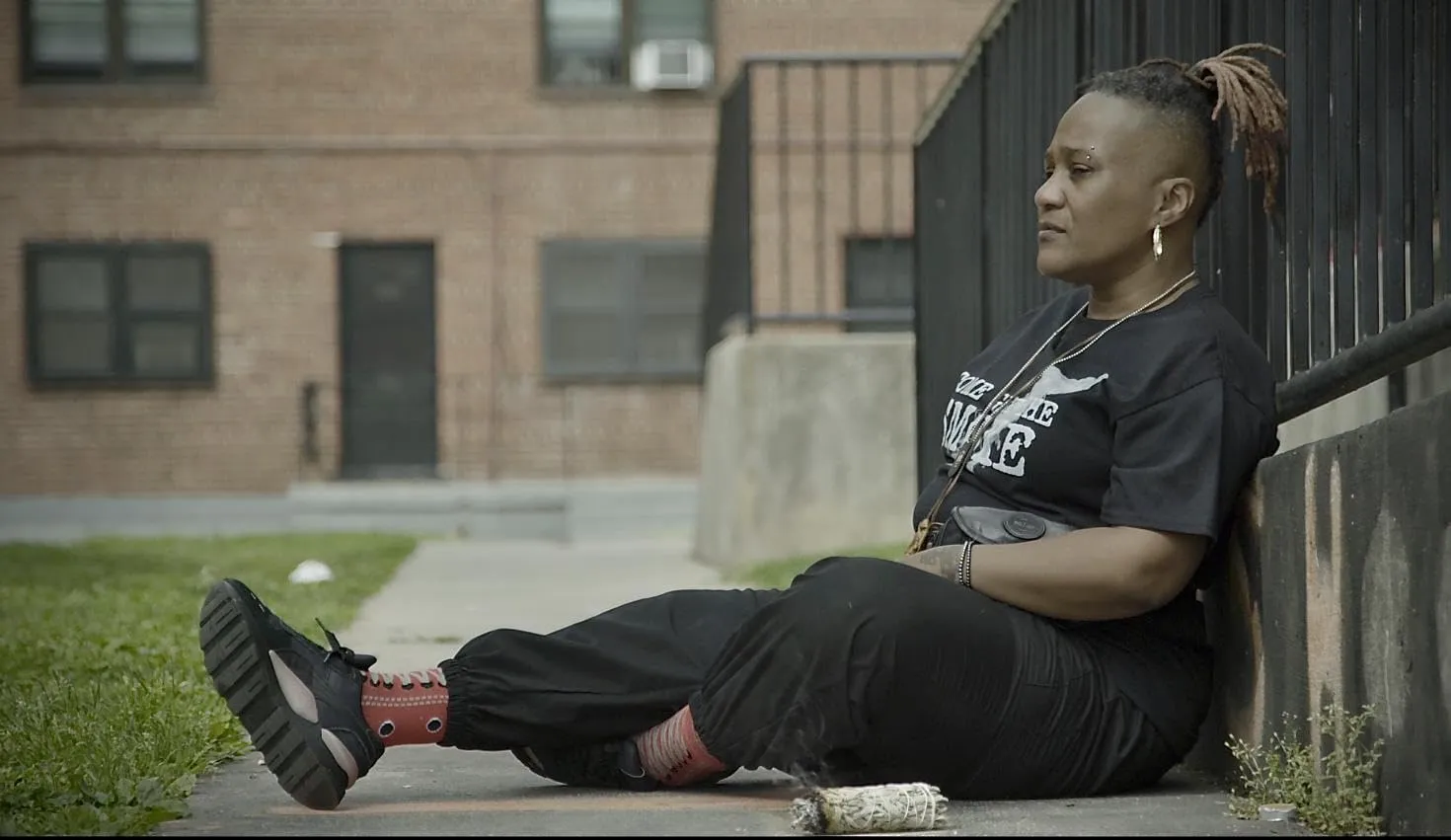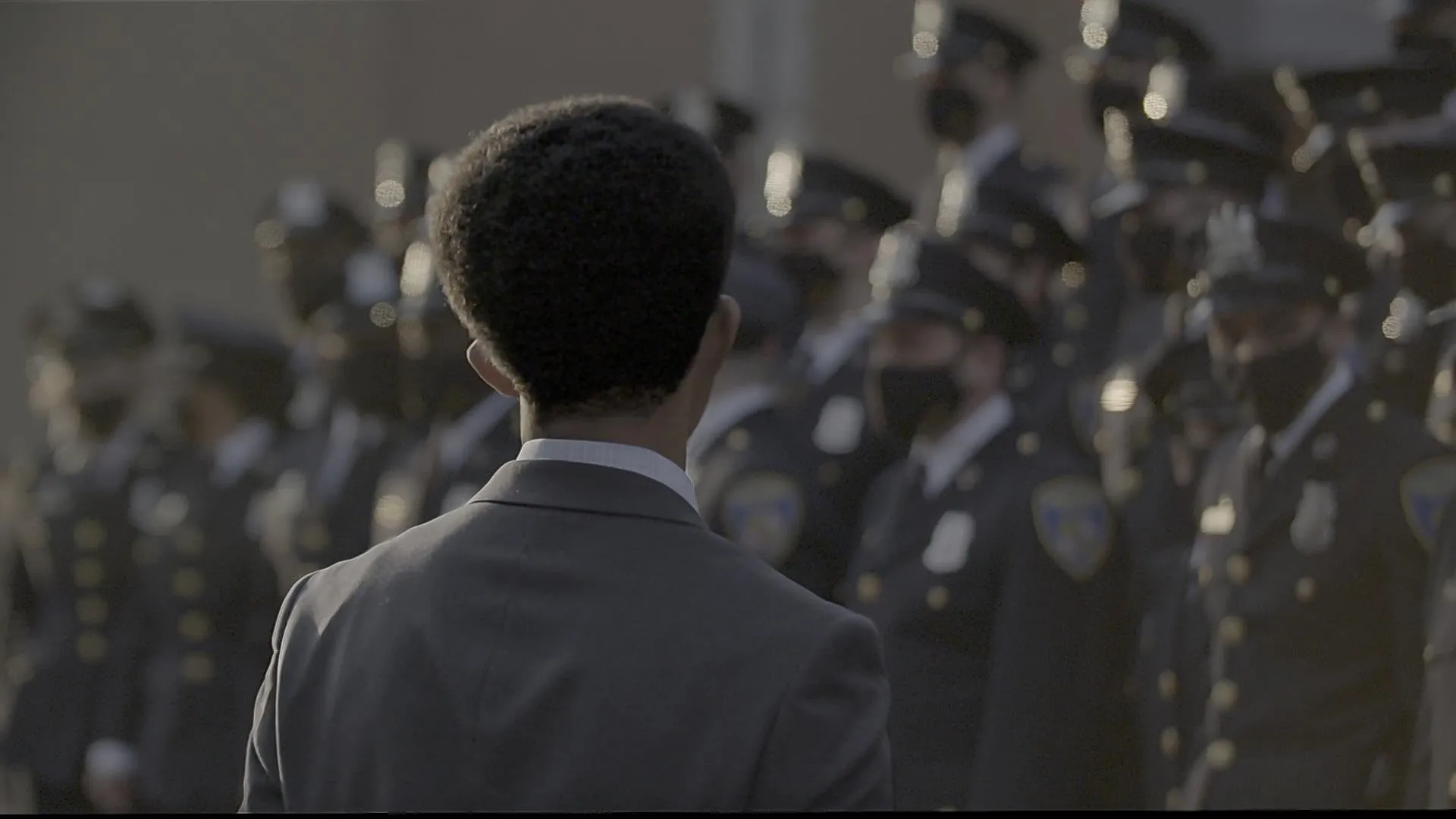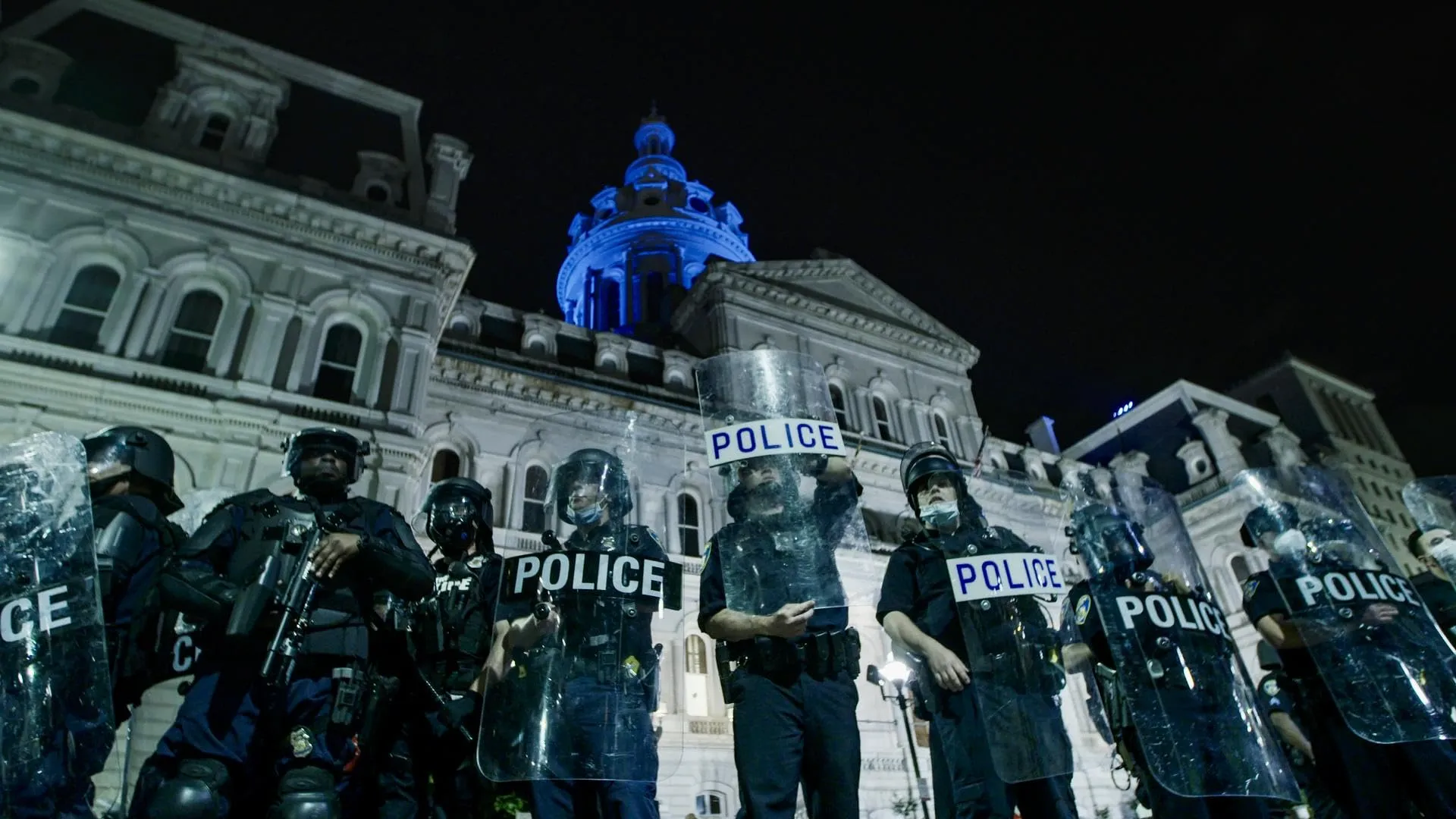Through the lens of Baltimore’s youngest mayor, Brandon Scott, filmmaker Gabriel Francis Paz Goodenough invites us into the turbulent world of the city in The Body Politic. This documentary develops not merely as a political narrative but also as a reflection on the complexities of leadership in a city grappling with the shadows of violence and institutional neglect.
The story of Scott’s rise to power is replete with echoes of despair, the screams of a community yearning for change, and the ever-present threat of crime that hangs big over Charm City.
As Scott navigates the dangerous seas of governance, we must confront existential concerns about the nature of authority and the human condition. Is it enough to aspire to be the change we want to see? Is that aspiration merely a glimmer of hope in an otherwise bleak landscape?
The film captures Scott’s sincerity while also exposing the existential dread that permeates the fabric of Baltimore—a city that has become a crucible of urban struggle, reflecting bigger societal maladies. Scott embodies the fragile dream of a community seeking redemption amidst the making of its chaos; he is more than just a politician in this situation.
Shadows of Despair: Baltimore’s Crime Landscape
Once vibrant with the pulse of community life, Baltimore’s streets now reverberate with the crushing weight of despair—a city caught in a never-ending cycle of violence. The documentary The Body Politic begins with alarming statistics: 348 homicides in 2019 alone cast a gloomy veil over the city, establishing it as one of America’s most hazardous urban settings.
This numerical act of suffering is not merely an abstract figure but a visceral reminder of lost lives and ruined families, permeating the air with a palpable sense of grief. The historical context of these characters portrays a city long abandoned to its demons, where institutional injustices and socioeconomic despair create a breeding ground for violence.
However, the narrative goes beyond numbers, delving into public perception created by a succession of mayors whose legacies have been tainted by controversy and corruption. Sheila Dixon and Catherine Pugh, both involved in financial wrongdoing, have left an indelible scar on the city’s trust—an erosion of faith that lingers below the surface. Can a city heal when its leaders are viewed as the architects of decay? This disillusioned backdrop presents serious challenges.
Baltimore’s struggle reflects deeper societal challenges, reflecting the strained relationship between governance and the governed. Scott enters this tempest carrying not only the dreams of a distressed nation but also the existential burden of confronting a legacy of betrayal. In such a landscape, where despair coexists with the quest for redemption, the struggle for regeneration becomes a complex dance with the shadows of the past.
Brandon Scott: A New Kind of Leader
Brandon Scott emerges not merely as a politician but as a figure of hope forged in the fires of personal tragedy in the crucible of Baltimore’s unrest. His early life, steeped in the brutal reality of violence, shaped an awareness sensitive to the suffering of others around him.
Scott, who witnessed his first shooting at the age of seven, carries the weight of his past with him—a frightening spectre that influences his utopian vision for a city in desperate need of change. This personal narrative imbues his leadership with a sense of urgency and authenticity, compelling him to confront the roots of violence rather than merely confronting its symptoms.
Scott’s approach to governance is a deviation from the norm. He advocates for proactive strategies that prioritize community engagement above punitive measures. His leadership approach, defined by empathy and resilience, seeks to break the cycle of despair that has long plagued Baltimore.
He embodies an ethos that challenges the existing quo: to shift the narrative from reactive policing to one based on prevention and empowerment. The path to transformation is fraught with resistance from a sceptical public and entrenched political foes, so this idealism is not without its challenges.
The reception of Scott’s leadership reflects the larger existential concerns that plague urban governance. Can one man’s vision change the course of a city devastated by years of neglect? Scott’s journey illustrates the underlying tensions of leadership: the tension between aspiration and reality, hope and the constant threat of failure as he navigates the tumultuous waters of public opinion.
In this delicate dance, he remains unwavering, embodying the struggle to rise above the gloom while grappling with the uncertainty of meaningful change. Scott stands out in the heart of Baltimore as both a beacon and a paradox—a leader attempting to pave a path through the shadows of a shattered community.
Navigating the Labyrinth: Innovative Governance Strategies
In the heart of Baltimore, where the shadows of violence hang large, Mayor Brandon Scott embodies a revolutionary spirit—one that seeks to redefine governance contours via community engagement. The documentary The Body Politic portrays Scott’s programs, particularly the Safe Streets program, as a beacon of hope amidst the chaos.
This effort, designed not merely to respond to crime but also as a preventative strategy, highlights a major shift from traditional policing to community empowerment. Herein lies the essence of Scott’s vision: to engage citizens in the battle against violence, converting them from passive viewers to active players in their protection. It is a concept based on the belief that the roots of crime must be addressed rather than merely its symptoms.
This great aspiration, however, is fraught with existential quandaries. The notion that community-led projects may stem the tide of violence poses serious questions: May trust be built in a landscape so profoundly wounded by neglect? Will a community’s collective voice, once hushed, find the strength to resonate in the face of despair? Despite Scott’s admirable ideals, the path is fraught with challenges and resistance.
Political opposition arises from established interests, with state leadership frequently appearing hesitant or antagonistic to Scott’s new tactics. The narrative depicts a struggle between progressive ideals and the harsh realities of bureaucratic stagnation. Scott’s attempts to establish a new path are met with suspicion, as critics use the legacy of prior administrations to discredit his vision.
This interplay between resistance and aspiration echoes each leader’s larger existential struggle: the quest for change in the face of a system designed to maintain the status quo. In this explosive milieu, Scott’s journey becomes more than just a local story; it also reflects the nature of leadership in a broken society.
The Personal Impact of Violence: Echoes of the Past
is inexorably linked to the spectre of violence that haunts Baltimore—a city where gunshots have become a frightening lullaby. Scott’s early exposure to cruelty, witnessing a shooting at the age of seven, leaves an indelible mark on his mind, influencing not only his path to leadership but also the policies he seeks to execute.
This human history serves as a heartbreaking reminder that politics is fundamentally personal; each statistic of violence represents a life shattered, a family split apart. Scott’s activities stem from this crucible of experience, echoing a deep desire to protect others from going through similar anguish.
The documentary captures community members’ voices and weaves their stories into Scott’s vision fabric. Each loss narrative becomes a thread in a greater tapestry of resilience, revealing how grief can inspire action. This emotional connection permeates the film, illustrating the deep impact of violence on Baltimore’s people’s collective consciousness. Motivated by their personal experiences, local activists emerge as potent change agents, their stories a testament to the capacity of the human spirit to confront despair.
The cycle of violence is unending, and its scars are profound, but among these narratives of resilience lies an unnerving truth. Each triumph is overshadowed by the constant threat of recurrence, prompting profound questions about the nature of healing. Can a community genuinely transcend its history if its streets are still stained by bloodshed? The film forces us to reflect on the delicate balance between despair and the never-ending pursuit of atonement as Scott navigates this labyrinth of grief and hope. This struggle resonates well beyond Baltimore’s borders.
Frames of Intimacy: Directorial Choices and Cinematic Style
Gabriel Francis Paz Goodenough uses his camera in The Body Politic not merely as a recording tool but also as an instrument of emotional resonance, crafting a visual narrative that immerses viewers in the chaos of Baltimore’s streets. The cinematography, a collaboration with John Benam, has a raw, almost voyeuristic quality that captures the gritty reality of urban life.
Close-ups of Scott’s determined expressions contrast with wide shots of barren areas, creating a sense of intimacy that takes us into the human experience while emphasizing the urgency of the issues at hand. Each picture pulsates with the weight of unsaid stories, creating a deep connection to the lives entwined in the city’s struggles.
The documentary’s narrative structure mimics the ebb and flow of Scott’s journey, expertly blending moments of triumph and despair. Goodenough’s pacing is methodical, allowing for reflection amid the chaos and emphasizing the film’s existential themes.
This rhythmic interplay of action and reflection invites viewers to grapple with the complexities of leadership and community, reflecting on the fragility of hope in the face of unending tragedy. In this dance of light and shadow, the structure not only supports but also enriches the subject components, making Scott’s quest a moving exploration of resilience against an unforgiving backdrop.
Themes of Hope and Resilience: A Tapestry of Possibility
In The Body Politic’s dismal landscape, hope emerges as a delicate yet persistent thread woven into the fabric of despair. The film digs into the complex dance of misfortune and aspiration, portraying Baltimore not only as a city plagued by violence but also as a crucible for change.
Brandon Scott’s journey is emblematic of this struggle; his idealism, tempered by the hard realities of governance, serves as a beacon for those who dare to imagine a better future. Amidst the statistics that loom like spectres, the documentary provides glimpses of resilience: moments when community members band together, sparking a collective spirit that resists the weight of history.
However, inside this hopeful narrative lies a disturbing question: Can genuine change arise from such profound turmoil? The film posits that the solution lies in civic engagement—a call to action for citizens to recover their agency in the face of systemic challenges. Scott’s leadership, distinguished by a commitment to community-driven projects, challenges the notion that a single individual can change the course of a city. Instead, it asserts that transformation is a collaborative effort, a symphony of voices rising against the noise of despair.
The film invites reflection on Scott’s legacy—not merely as a local character but also as a possible forerunner for other towns grappling with comparable difficulties. His journey serves as a microcosm of a larger movement advocating for a shift in how we view leadership in urban reform.
The importance of empathy, collaboration, and sustained effort resonates beyond Baltimore’s borders, urging us to ponder: what might a future forged through research and collaboration look like in our community? The Body Politic becomes more than just a documentary in this sophisticated exploration; it becomes a philosophical inquiry into the nature of hope in a world of uncertainty.
The Review
The Body Politic
The Body Politic explores hope and resilience in the face of urban despair, capturing the complexities of Brandon Scott's leadership in Baltimore's shadows of violence. Through intimate cinematography and compelling narratives, the film invites viewers to grapple with big philosophical concerns about change and community. It is a testament to civic engagement's power and the unwavering pursuit of a brighter future. This documentary is both a call to action and a reflection on the human condition, making it a must-see for anybody interested in social transformation.
PROS
- Engaging portrayal of Brandon Scott’s journey and governance.
- Personal stories from community members enhance the film's impact.
- Intimate and urgent visuals that immerse viewers in Baltimore’s reality.
- Raises profound questions about leadership, violence, and community.
- Balances despair with messages of resilience and possibility for change.
CONS
- Some viewers may find the pacing uneven at times.
- Assumes prior knowledge of Baltimore’s political landscape, which may confuse some audiences.
- Primarily centered on Scott, potentially sidelining broader systemic issues.




















































